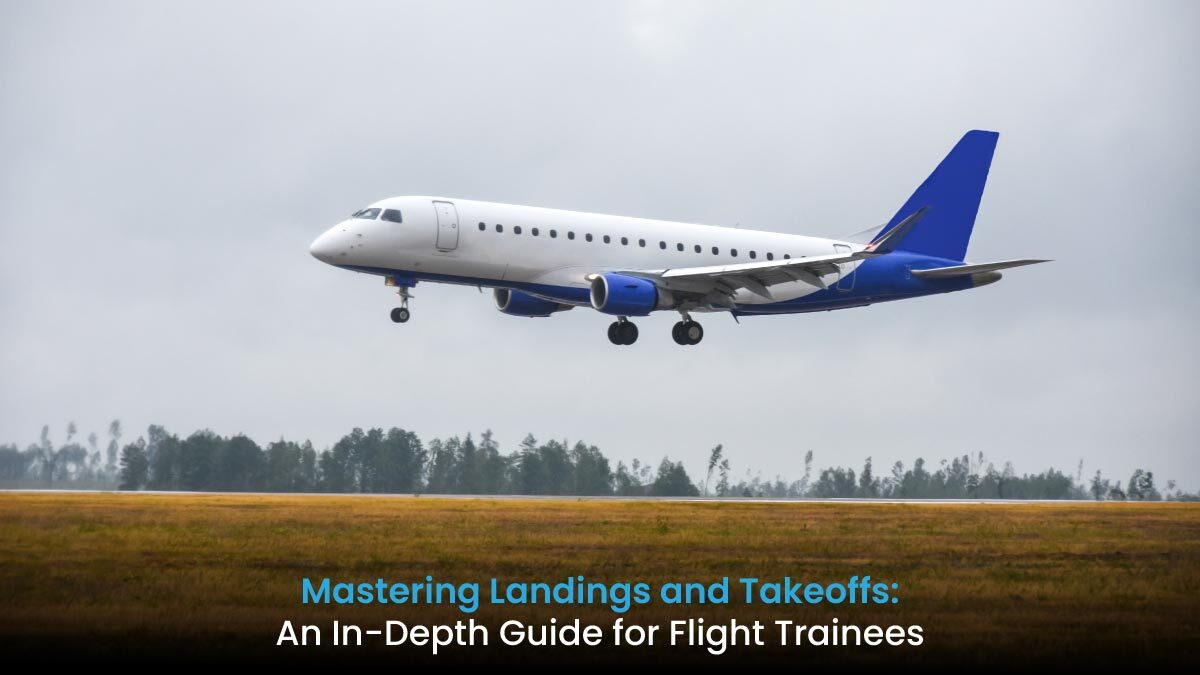
While the path to becoming a skilled pilot is paved with countless challenges, none are more vital than mastering the twin arts of takeoff and landing. These two phases of flight are the most complex and demanding aspects of aviation. Flight trainees are required to have a blend of precision, situational awareness, and technical expertise to ensure the safety of every flight. In this guide, let us explore the key elements that contribute to successful landings and takeoffs.
Understanding the Basics
Understanding the foundations is crucial before delving into the approaches:
- Takeoff: This phase involves accelerating the aircraft to a speed where lift overcomes weight, allowing the plane to leave the ground. A successful flight takeoff requires proper aircraft configuration, understanding runway length, and considering factors such as wind speed and direction.
- Landing: Landing is the process of returning the aircraft to the ground, and it’s often the most challenging aspect of flying. It requires precise control of speed, descent rate, and alignment with the runway, along with managing external conditions like weather.
Takeoff Techniques for Trainees
- Pre-Takeoff Checklist: Before every takeoff, a thorough checklist is crucial. This includes verifying fuel levels, flap settings, trim, and engine parameters. A missed step can lead to complications during the climb.
- Understanding V-speeds: Familiarise yourself with V-speeds, particularly V1 (decision speed), VR (rotation speed), and V2 (safe climb speed). These speeds are vital for making decisions during takeoff.
- Runway Alignment and Roll: Use the rudder pedals to maintain alignment with the runway centerline. Apply power smoothly to avoid sudden torque that could cause the aircraft to veer off course.
- Rotation and Initial Climb: At VR, gently pull back on the yoke to rotate the aircraft. The key is to avoid over-rotating, which could lead to a stall, and to maintain a steady climb rate.
- Handling Aborted Takeoffs: Know the procedures for aborting a takeoff. If any abnormality is detected before V1, abort the takeoff. After V1, it’s safer to continue the takeoff unless a catastrophic failure occurs.
Landing Techniques for Trainees
- Approach and Descent Planning: A good flight landing starts with a well-planned approach. Maintain the correct glide slope using visual or instrument guidance systems and ensure the aircraft is configured for landing with the appropriate flaps and speed.
- Understanding the Flare: The flare is the transition from a descent to a level flight just before touchdown. The key to a smooth landing is a gentle flare that reduces the descent rate without ballooning the aircraft.
- Crosswind Landings: Practice crosswind landing techniques, such as the crab method (aligning the nose into the wind) or the wing-low method (using an aileron into the wind and opposite rudder). Crosswinds are a significant challenge for new pilots, but mastering these techniques is essential.
- Touchdown and Rollout: Aim for a gentle touchdown on the main wheels first, followed by lowering the nose wheel. Maintain runway alignment using rudder inputs and gradually reduce speed while applying brakes.
- Go-Arounds: Never hesitate to initiate a go-around if the approach is unstable or conditions are unfavourable. It’s better to make another attempt than to risk a poor landing.
Common Mistakes and How to Avoid Them
- Overcontrolling: New pilots often tend to overcorrect during landings and takeoffs. Practice smooth, small inputs to avoid sudden movements that could destabilise the aircraft.
- Misjudging Altitude and Speed: Avoid focusing too much on the runway during landing, as this can lead to a misjudgment of altitude and speed. Use instruments to monitor your descent and ensure a stabilised approach.
- Ignoring Environmental Factors: Always consider factors like wind, weather, and runway conditions. Ignoring these can lead to difficulties during both takeoff and landing.
Building Confidence Through Practice
Mastery comes with experience. Regularly practice landings and takeoffs under various conditions, including different wind speeds, runway lengths, and aircraft configurations. Utilise simulators to refine your skills without the pressures of actual flight. Additionally, seek feedback from instructors and experienced pilots to continuously improve your technique.
Mastering landings and takeoffs is a pivotal part of a pilot’s flight training. By understanding the principles, practising consistently, and learning from each flight, trainees can build the confidence and skill required to execute these manoeuvres safely. Insight Aviation’s instructors can make you excel in take-offs and landings with their extensive years of expertise. Join Insight Aviation’s IndiGo Cadet Pilot Programme and be a master of skies.
FAQs
Q. How important is it to understand weather conditions for takeoffs and landings?
A. Knowing about flying techniques in changing weather conditions can help you land your dream career. This is the highest level of skill required in Aviation, which can set you apart from others
Q. What role does simulator training play in mastering landings and takeoffs?
A. In a safe and controlled setting, simulators can assist trainees in experiencing real-life critical circumstances like engine problems, harsh weather, and flight emergency landings.
Q. How can flight trainees develop better control during short-field landings?
A. By regularly practising complete control of your airspeed and descent rate in real-life scenarios or simulators, flight trainees can develop better control during short-field landings.

